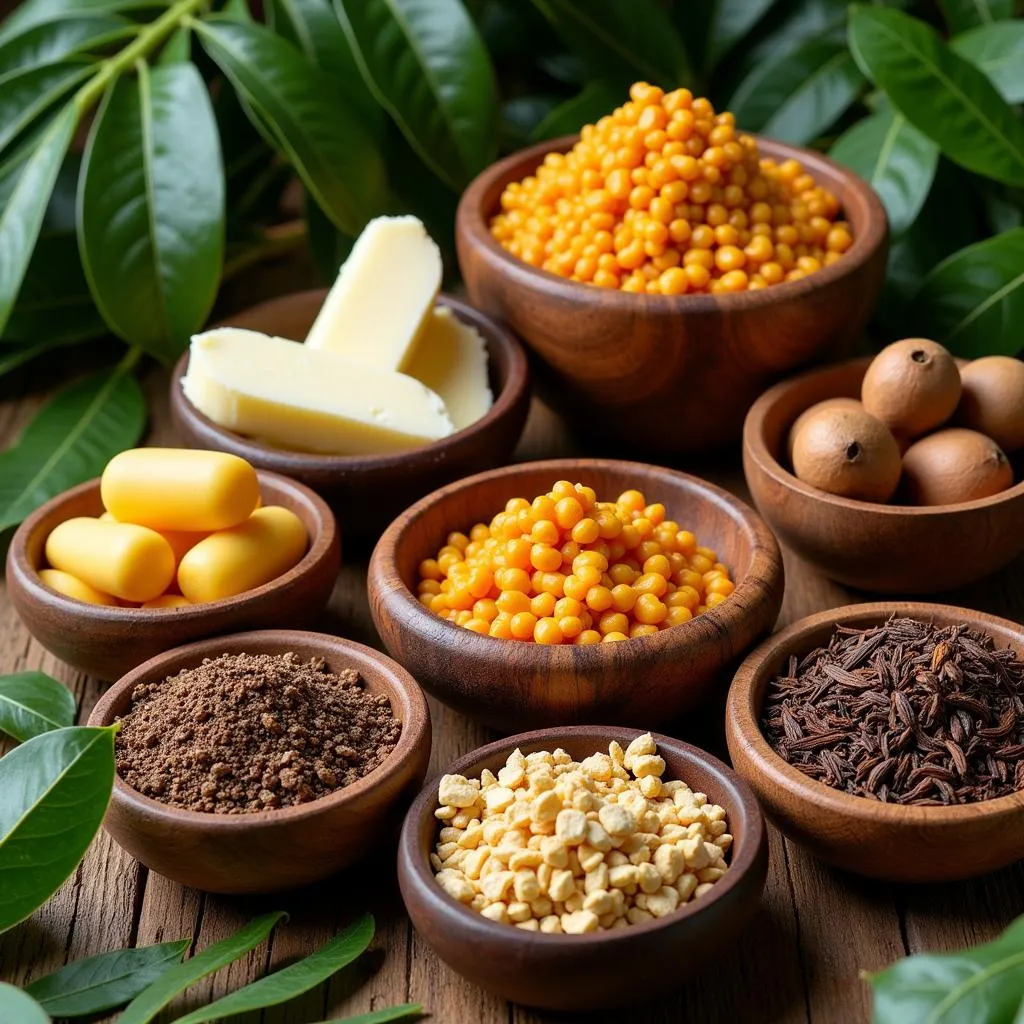African Forest Tribes Dresses: A Journey into Cultural Attire
African Forest Tribes Dresses are more than just garments; they are intricate expressions of culture, identity, and tradition. These unique ensembles, often crafted with natural materials and adorned with symbolic patterns, offer a glimpse into the rich tapestry of life within Africa’s lush forests. From the vibrant colours of the Kuba raffia cloth to the intricate beadwork of the Maasai, each tribe’s attire tells a story, reflecting their beliefs, social structures, and relationship with the environment.
Unveiling the Significance of African Forest Tribes Dresses
The attire of forest tribes reflects a deep connection to nature. Materials such as barkcloth, raffia, and animal hides are skillfully transformed into elaborate garments. These dresses are not merely functional; they hold deep symbolic meaning, often representing social status, age, marital status, or spiritual beliefs. The intricate patterns and embellishments woven into the fabric can narrate historical events, myths, or proverbs, preserving cultural heritage for generations.
The Art of Adornment: Materials and Techniques
African forest tribes exhibit incredible artistry in their dressmaking. Natural dyes derived from plants, roots, and minerals create vibrant hues, while meticulous techniques like weaving, embroidery, and beadwork add intricate details. For example, the Kuba people of the Democratic Republic of Congo are renowned for their elaborately patterned raffia cloth, which is often incorporated into prestigious garments worn during ceremonies and rituals.
The Himba people of Namibia use red ochre mixed with animal fat to create a distinctive reddish-brown paste that they apply to their skin and hair, creating a striking visual effect. This practice, known as “otjize,” serves not only as a cosmetic but also as a symbol of cultural identity and protection from the harsh desert climate.
Diversity in Design: Exploring Different Tribal Styles
Across the vast expanse of Africa’s forests, a remarkable diversity of dress styles exists. Each tribe possesses its own unique aesthetic, reflecting its specific environment and cultural heritage. The Baka people of Cameroon and Gabon, known for their nomadic lifestyle, favor simple yet practical garments made from barkcloth or animal hides. These dresses allow for ease of movement while navigating the dense forest undergrowth.
In contrast, the Maasai people of Kenya and Tanzania are recognized for their vibrant red shukas, draped over their bodies and often adorned with intricate beadwork. The colour red holds symbolic significance for the Maasai, representing bravery and strength.
What are some common materials used in African forest tribe dresses?
Common materials include barkcloth, raffia, animal hides, and feathers.
What do the colours and patterns on the dresses symbolize?
Colours and patterns often represent social status, age, marital status, or spiritual beliefs.
Dr. Abimbola Adebayo, a renowned anthropologist specializing in African cultures, explains, “The dresses are not mere fashion statements; they are visual narratives that encapsulate the essence of a tribe’s history, values, and worldview.”
How are African forest tribe dresses made?
The creation of these dresses involves a variety of techniques such as weaving, dyeing, embroidery, and beadwork, often passed down through generations.
Preserving Cultural Heritage: The Future of African Forest Tribes Dresses
As the world becomes increasingly interconnected, preserving the unique traditions of African forest tribes becomes even more crucial. These dresses, imbued with cultural significance, are not only a testament to the ingenuity and creativity of their creators but also a vital link to the past. By understanding and appreciating the artistry and symbolism embedded within these garments, we can contribute to the preservation of these rich cultural heritages.
In conclusion, African forest tribes dresses are more than just clothing; they are powerful symbols of cultural identity, artistry, and tradition. These garments, crafted with natural materials and adorned with symbolic patterns, offer a window into the rich tapestry of life within Africa’s forests. By understanding and appreciating these unique forms of expression, we can help ensure the preservation of these invaluable cultural heritages for generations to come.
FAQ
- What are some of the most well-known African forest tribes? Some examples include the Baka, the Kuba, and the Yaka.
- Where can I learn more about African tribal art? Museums, cultural centers, and online resources offer a wealth of information.
- Are African forest tribe dresses still worn today? Yes, they are still worn for various occasions, including ceremonies, rituals, and everyday life.
- What is the significance of beadwork in African tribal dress? Beadwork often conveys messages related to social status, age, or clan affiliation.
- How can I support the preservation of African cultural heritage? By learning about and appreciating these cultures, supporting ethical tourism, and advocating for their preservation.
- What is the role of women in creating these dresses? Women often play a central role in creating and preserving these traditions.
- Where can I see examples of African forest tribe dresses? Many museums and cultural institutions have collections of these garments.
Professor Chike Okonkwo, an expert in African textile arts, notes, “The symbolism embedded in these dresses reflects a deep understanding of the natural world and the interconnectedness of all living things.” He emphasizes the importance of preserving these traditions for future generations.
We encourage you to explore our other articles on African culture, including “The Music of the Forest Tribes” and “Traditional African Cuisine.”
For any assistance, please contact us at Phone Number: +255768904061, Email: [email protected] or visit us at Mbarali DC Mawindi, Kangaga, Tanzania. We have a 24/7 customer service team.

